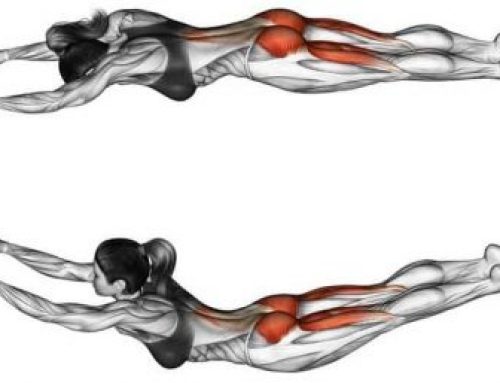
Mastering Full-Body Workouts: Benefits, Best Practices, and Sample Routines for All Levels
Introduction to Full-Body Workouts
Full-body workouts are a comprehensive approach to fitness that target multiple muscle groups within a single session. Unlike split routines, which focus on isolating specific muscles on different days, full-body workouts aim to engage both upper and lower body muscles simultaneously. This method not only maximizes efficiency but also offers a balanced workout, promoting overall physical conditioning.
One of the primary benefits of full-body workouts is their ability to streamline training schedules. For individuals with busy lifestyles, these workouts provide a practical solution by allowing them to achieve substantial results in fewer sessions per week. Additionally, full-body routines can enhance metabolic rate and cardiovascular health, aiding in effective weight management and improved stamina.
Engaging in full-body workouts also supports better muscle coordination and functional strength. By incorporating compound movements—exercises that work multiple joints and muscle groups—individuals can develop more practical strength that translates to everyday activities. This holistic approach is particularly beneficial for those seeking to improve overall fitness and physical resilience.
The structure of this blog post will guide readers through a comprehensive understanding of full-body workouts. Beginning with an in-depth look at the benefits, we will explore best practices to ensure effective and safe training. Following this, we will provide sample routines tailored for various fitness levels, from beginners to advanced practitioners. Each section aims to equip readers with the knowledge and tools necessary to incorporate full-body workouts into their fitness regimen effectively.
By the end of this blog post, readers will have a clear understanding of how full-body workouts can serve as a versatile and efficient component of their fitness journey, fostering a well-rounded and sustainable approach to physical health.
Key Benefits of Full-Body Workouts
Full-body workouts offer a myriad of advantages that make them an attractive option for individuals at all fitness levels. One of the most significant benefits is the improvement in muscle balance. By engaging multiple muscle groups in a single session, these workouts ensure that no muscle is neglected, promoting balanced muscle development and reducing the risk of imbalances that can lead to injury.
Another notable benefit is the increased calorie burn. Because full-body workouts involve multiple muscle groups simultaneously, they tend to be more metabolically demanding. This heightened level of activity results in a higher calorie expenditure, making these workouts particularly effective for those aiming to lose weight or maintain a healthy body composition.
Enhanced cardiovascular health is also a key advantage of full-body workouts. These routines often incorporate compound movements that elevate the heart rate, providing both strength training and cardiovascular benefits. This dual approach not only builds muscle but also enhances cardiovascular endurance and overall heart health.
Time efficiency is another compelling reason to incorporate full-body workouts into your fitness regimen. For individuals with busy schedules, these workouts offer a comprehensive exercise solution that maximizes results in a shorter time frame. Rather than spending hours in the gym focusing on different muscle groups on different days, a full-body workout allows you to achieve your fitness goals with fewer sessions per week.
Full-body workouts are also highly adaptable, making them suitable for a wide range of fitness goals. Whether you’re looking to build muscle, lose weight, improve endurance, or simply maintain overall fitness, these routines can be tailored to meet your specific needs. By adjusting the intensity, volume, and type of exercises, individuals can create a personalized workout plan that aligns with their unique objectives.
In summary, full-body workouts offer improved muscle balance, increased calorie burn, enhanced cardiovascular health, and greater time efficiency. These benefits make them an excellent choice for anyone looking to improve their overall fitness, regardless of their specific goals or fitness level.
Best Practices for Effective Full-Body Workouts
Maximizing the effectiveness of full-body workouts hinges on adhering to several best practices. First and foremost, maintaining proper form and technique is crucial to prevent injuries and ensure that each muscle group is engaged correctly. Improper form can lead to ineffective workouts and increase the risk of strain or injury. It is advisable to seek guidance from a fitness professional or utilize instructional videos to master the correct techniques.
Equally important is the incorporation of warm-ups and cool-downs in your workout regimen. A proper warm-up, consisting of dynamic stretches and light aerobic exercises, prepares the muscles and cardiovascular system for the upcoming workout, reducing the risk of injury. Similarly, cool-downs, which may include static stretching and low-intensity movements, help in gradually lowering the heart rate and promoting muscle recovery.
When it comes to workout frequency, full-body workouts are typically recommended 2-3 times per week. This allows sufficient time for muscle recovery while maintaining a consistent exercise routine. Overworking the muscles without adequate rest can lead to fatigue and hinder progress. Therefore, balancing workout days with rest days is essential for optimal performance and growth.
Rest and recovery are integral components of any effective workout plan. Muscles need time to repair and grow stronger after being exercised. Incorporating rest days and ensuring adequate sleep and nutrition can significantly enhance recovery and overall performance. Listening to your body and allowing it to recover is key to sustaining long-term fitness goals.
Consistency and progression are fundamental principles for anyone looking to master full-body workouts. Regularly engaging in these exercises and gradually increasing the intensity, whether through added weights or more challenging routines, ensures continual improvement and prevents plateaus. Tracking progress and setting incremental goals can aid in maintaining motivation and achieving desired results.
Common Mistakes to Avoid
Full-body workouts are an effective way to achieve overall fitness, but certain common mistakes can hinder progress and lead to injuries. Understanding these pitfalls is crucial for maximizing the benefits of your exercise regimen.
One prevalent mistake is overtraining. While enthusiasm for fitness is commendable, overworking your body without adequate rest can lead to burnout and injuries. It is essential to incorporate rest days into your workout schedule to allow muscles to recover and grow. A balanced routine typically involves a mix of workout days and rest days, ensuring that your body remains in optimal condition.
Another common error is neglecting certain muscle groups. Full-body workouts are designed to target all major muscle groups, but individuals often focus on their favorites, such as the chest and biceps, while ignoring others like the legs and back. This imbalance can lead to underdeveloped muscles and potential injuries. To avoid this, follow a well-rounded program that ensures all muscle groups receive adequate attention.
Improper technique is also a significant issue. Performing exercises with incorrect form not only reduces their effectiveness but also increases the risk of injury. It is vital to learn and practice the proper techniques for each exercise. Consider seeking guidance from a fitness professional or using reliable resources to ensure you are executing movements correctly. Pay attention to your body’s alignment and avoid rushing through reps, as control and form are more important than speed.
Lastly, insufficient rest is another common mistake. Beyond rest days, it’s important to ensure each workout includes adequate rest periods between sets. Shortchanging rest times can reduce performance and increase fatigue. Listen to your body’s signals and don’t push beyond your limits.
By being mindful of these common mistakes and taking steps to avoid them, you can ensure that your full-body workouts are both safe and effective, paving the way for consistent progress in your fitness journey.
Sample Full-Body Workout Routines for Beginners
Starting a fitness journey can be intimidating, but a well-structured full-body workout routine can set the foundation for long-term success. For beginners, it is essential to focus on exercises that enhance overall strength, improve coordination, and build endurance. The following sample routine includes specific exercises, recommended sets, and reps, and provides guidelines for progression.
1. Squats – 3 sets of 10-12 reps
Squats are fundamental for building lower body strength. They target the quadriceps, hamstrings, and glutes. Beginners should focus on mastering the form, ensuring their knees don’t extend past their toes.
2. Push-Ups – 3 sets of 8-10 reps
Push-ups are excellent for developing upper body strength, particularly in the chest, shoulders, and triceps. Beginners may start with knee push-ups or incline push-ups to build strength gradually.
3. Bent-Over Rows – 3 sets of 10-12 reps
This exercise targets the back muscles, including the latissimus dorsi and rhomboids. Using light dumbbells or a resistance band can help beginners develop proper form and strength.
4. Planks – 3 sets of 20-30 seconds
Planks are effective for core strengthening. They engage the abs, obliques, and lower back. Beginners should focus on maintaining a straight line from head to heels, avoiding sagging hips.
5. Lunges – 3 sets of 10 reps per leg
Lunges are excellent for lower body strength and improving balance. They target the quadriceps, hamstrings, and glutes. Beginners should ensure their front knee aligns with their toes to prevent injury.
For progression, beginners should aim to increase the number of reps or sets gradually. Additionally, incorporating variations or adding light weights can further challenge the muscles. Consistency is key; performing this routine three times a week allows adequate recovery while promoting muscle growth and endurance.
By starting with these fundamental exercises, beginners can build a strong foundation, making it easier to transition to more advanced routines in the future. Each exercise is chosen for its ability to engage multiple muscle groups, ensuring a comprehensive full-body workout.
Sample Full-Body Workout Routines for Intermediates
For individuals at an intermediate fitness level, it is crucial to build upon the foundational strength and endurance acquired during the beginner phase. This full-body workout routine incorporates a balanced mix of compound and isolation exercises, ensuring a comprehensive approach to muscle development and overall fitness enhancement. The focus here is on improving muscle coordination, strength, and endurance, while also preparing the body for more advanced training in the future.
1. Warm-Up:
Start with a 10-minute warm-up consisting of light cardio, such as jogging or jumping jacks, followed by dynamic stretches targeting major muscle groups.
2. Compound Exercises:
Squats: 3 sets of 10-12 reps
Deadlifts: 3 sets of 8-10 reps
Bench Press: 3 sets of 10-12 reps
Pull-Ups: 3 sets of 8-10 reps (or assisted pull-ups if necessary)
These compound exercises engage multiple muscle groups simultaneously, promoting functional strength and muscle growth. Adequate rest periods of 60-90 seconds between sets are recommended to maintain intensity while allowing for muscle recovery.
3. Isolation Exercises:
Bicep Curls: 3 sets of 12-15 reps
Tricep Dips: 3 sets of 12-15 reps
Shoulder Lateral Raises: 3 sets of 12-15 reps
Leg Curls: 3 sets of 12-15 reps
Incorporating isolation exercises helps to target specific muscles, ensuring balanced development and addressing any potential weaknesses. Aim for a rest period of 45-60 seconds between these sets to keep the heart rate elevated and maximize efficiency.
4. Core Exercises:
Planks: 3 sets of 45-60 seconds
Bicycle Crunches: 3 sets of 20 reps per side
Focusing on core strength is essential for overall stability and injury prevention. These exercises will help build a strong foundation, which is critical for more advanced movements and routines.
5. Cool Down:
Conclude the workout with a 5-10 minute cool-down, including static stretching to aid in muscle recovery and flexibility improvement.
This intermediate full-body workout routine not only reinforces the basics but also introduces more challenging exercises, setting the stage for progression to advanced training. By consistently following this regimen, individuals can expect significant improvements in strength, muscle tone, and overall fitness levels.
Sample Full-Body Workout Routines for Advanced Levels
For those at an advanced level in their fitness journey, a full-body workout routine should incorporate complex exercises, higher intensity, and advanced techniques to continue progressing in strength and muscle growth. Below is a comprehensive workout plan designed for advanced individuals. This routine employs supersets and drop sets to maximize efficiency and muscle engagement.
Warm-Up: Begin with a 10-minute dynamic warm-up, including exercises such as jumping jacks, high knees, and dynamic stretches to prepare the body for high-intensity training.
Workout:
1. Superset: Deadlifts & Pull-Ups
- Deadlifts: 4 sets of 6-8 reps
- Pull-Ups: 4 sets to failure
- Rest: 90 seconds between supersets
Perform deadlifts with a heavy weight to challenge your posterior chain, then immediately follow with pull-ups to engage your upper body. This superset targets multiple muscle groups, enhancing overall strength.
2. Superset: Bench Press & Bent Over Rows
- Bench Press: 4 sets of 6-8 reps
- Bent Over Rows: 4 sets of 8-10 reps
- Rest: 90 seconds between supersets
This combination focuses on the chest, shoulders, triceps, and back muscles. Ensure proper form to maximize muscle engagement and minimize injury risk.
3. Drop Set: Squats
- Initial Set: 6-8 reps at 80% of your 1RM
- Drop 10-20% weight and perform another set to failure
- Drop another 10-20% weight and perform a final set to failure
- Rest: 2 minutes after completing the entire drop set
Utilizing a drop set for squats pushes your lower body muscles to fatigue, promoting hypertrophy and strength gains.
4. Superset: Overhead Press & Hanging Leg Raises
- Overhead Press: 4 sets of 8-10 reps
- Hanging Leg Raises: 4 sets of 12-15 reps
- Rest: 90 seconds between supersets
This superset targets the shoulders and core, ensuring a balanced full-body workout. Focus on controlled movements to maximize effectiveness.
Cool-Down: Conclude with a 10-minute cool-down, incorporating static stretches to enhance flexibility and aid in recovery.
By following this advanced full-body workout routine, individuals can continue to build strength, muscle mass, and overall fitness. The strategic use of supersets and drop sets ensures a challenging and efficient workout, driving optimal results across all major muscle groups.
Conclusion and Final Tips
In conclusion, the value of full-body workouts cannot be overstated. We have discussed the numerous benefits, including improved cardiovascular health, increased muscle strength, and enhanced flexibility. Full-body workouts also promote better balance and coordination, making them an excellent choice for individuals at all fitness levels.
Following best practices is crucial to maximizing the effectiveness of these workouts. Ensuring proper form and technique helps prevent injuries and ensures that all muscle groups are adequately targeted. Additionally, incorporating a mix of strength training, cardio, and flexibility exercises can lead to more comprehensive fitness gains.
Staying motivated and consistent is key. Setting realistic goals and tracking progress can help maintain engagement and commitment. It’s also vital to listen to your body and allow for rest and recovery to avoid burnout and overtraining. Remember, consistency trumps intensity, especially in the long run.
Finally, it’s essential to tailor your full-body workout routines to your personal fitness levels and goals. Whether you are a beginner or an advanced athlete, customizing your exercise plan can help you achieve optimal results. Don’t hesitate to seek professional guidance if needed, and keep exploring new exercises to keep your routine exciting and challenging.
By integrating these tips and best practices, you can harness the full potential of full-body workouts, paving the way for a healthier, stronger, and more balanced lifestyle.
About the author : Tricep
We valued your need and thought . Main aim is to keep you fit with our suggestion and help let have a lifestyle
Latest videos
The Vital Role of Exercise in Maintaining Our Health
Understanding Exercise and Its Impact on HealthExercise is a cornerstone of a healthy lifestyle, often regarded as a vital factor in promoting overall health and well-being. Engaging in regular physical activity not only enriches the [...]
The Role of Triceps in Bench Press: Maximize Your Gains
```html Understanding the Bench Press and Its Muscle Groups The bench press is a compound exercise, revered in the strength training community for its ability to enhance upper body power and muscle development. At its [...]
Join our mailing list today
Insider offers & flash sales in your inbox every week.
Curabitur non nulla sit amet nisl tempus convallis quis ac lectus dolor sit amet, consectetur adipiscing elit sed porttitor lectus.











